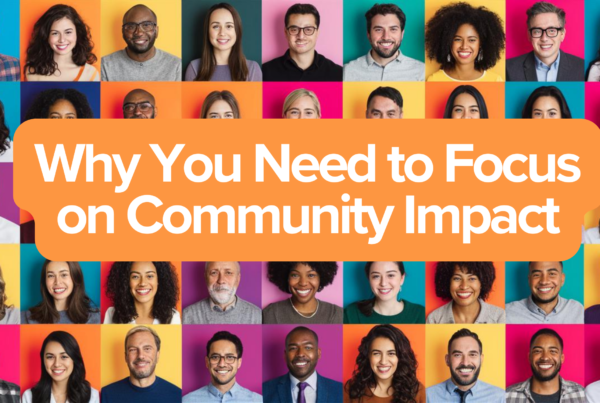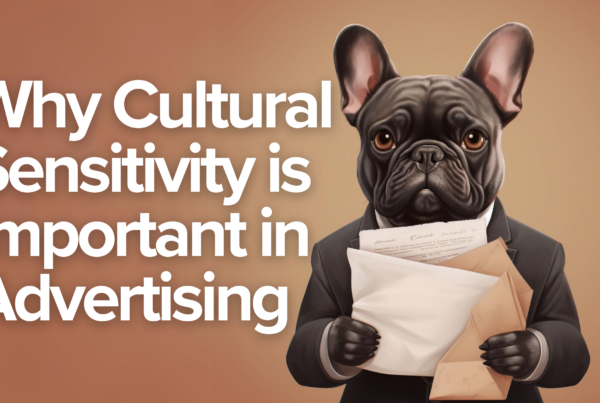Inclusion and diversity have never been more important, and we can now witness in real time how some brands fall or rise based on their marketing efforts. That’s why it’s important to have a profound understanding of multicultural marketing and why your business should embrace it.
Let’s consider how the target audiences are evolving – younger generations (such as Gen Z) are becoming more relevant for brands and companies. And statistics say that almost half of all Zoomers say that they come from an ethnic or minority background. So, if you want to establish your business as important, empathetic, and genuine, you should embrace diversity marketing as part of your efforts. If you are still not sure if multicultural marketing is the right approach for your company and want to understand more about this trendy marketing strategy, you are in the right place.
Let’s Define Diversity or Multicultural Marketing
There are many definitions of multicultural marketing, but we picked a quick one. This is what can be seen on the Wikipedia page dedicated to this topic:
Multicultural marketing is the practice of marketing to one or more audiences of a specific ethnicity – typically an ethnicity outside of a country’s majority culture, which is sometimes called the “general market.”
Here, at Phu Concepts, we believe that multicultural marketing, also known as inclusive or diversity marketing fits into the following:
“A marketing approach fully dedicated to addressing the needs and wants of a specific ethnicity.”
In essence, this type of marketing strategy is about treating multicultural consumers as a completely new segment, excluding any “one-size-fits-all” approach. This is done by tailoring your advertising efforts specifically to engage local communities, cultural practices, and unique identities.

What is a Multicultural Marketing Audience?
According to the US Census Bureau, multicultural consumers are defined as being composed of several different race categories – African-American, Black, American Indian, Pacific Islander, other, and two or more races. Hispanics of any race are also considered multicultural consumers, defined by the US Census Bureau as an ethnicity, not a race.
In other words, a multicultural audience is everyone who does not identify themselves as non-Hispanic white American or is either from a foreign country or has immigrants parents or grandparents. To engage a multi-ethnic consumer, your marketing strategy must genuinely understand your consumer’s cultural background, wants, and needs. The best path will always be the one where your brand builds empathy with your customers instead of directly pushing a product or service.
Understanding Minority Consumers
Many organizations lack the understanding that minority and multicultural consumers want to receive messages that reflect their culture. And by understanding, you have a better chance of gaining trust from minority audiences. According to the University of Pennsylvania, it’s simple to grasp what exactly are multicultural or minority consumers. Any buyer with more than one ethnic or cultural ethnic origin or association is considered a multicultural consumer. An Asian American buyer may concurrently identify as both Asian and American, and as a result, may enjoy brands that target both demographics.

What You Should Avoid When Applying Inclusivity
Marketers, brands, and companies should stay away from stereotypes and look into the inclusive marketing segment. They should also attempt to deliver unique experience and products that will only work for the targeted culturally diverse segment. But this can not be delivered correctly without doing a thorough research and understanding the search intent of such audiences.
In order to connect with your intended consumers in a profound and genuine way, you should also understand the influence of cultural diversity on search behavior. These differences should not be overlooked because they usually lead to significantly differing online presence and search queries of these groups. They will also influence what they are looking for on a website, the content they are willing to endorse and engage with, and their trust for brands, products, or services.
What’s Generalized or Total Marketing Approach?
On the opposite side of inclusive advertising strategy, we also have the so-called total marketing approach. What this means is that this type of advertising strategy is to cast a single wide net, aiming to reach as many people as possible. It includes SEO, content, landing pages, and other segments a team dedicated to digital marketing in Rochester (or elsewhere) would include in a campaign. While this “status quo” of advertising may seem like a more inclusive approach, it can easily backfire. By tending to include everyone, you might unintentionally exclude a specific group by not addressing their cultural diversity and background.
Multicultural marketing is robust and allows us to be flexible and engage more effectively with our customers. It does so by taking into account the target group’s ethnicity, religion, traditions, language, and all the other factors. The total marketing approach treats its consumers the same way, and it may reduce opportunities for a company. And in the case of the worst fails, it might receive a backlash.

Why Is the Multicultural Approach So Important?
There is a great opportunity that has not been fully explored when it comes to diversity advertising. More than before, marketers, brands, and companies have the chance to build connections with multicultural audiences and make them feel seen and heard.
As we mentioned earlier, the US population is changing rapidly. Companies need to acknowledge the evolution of consumers and adapt their marketing efforts over time. It takes research, resources, time, and intentional commitment in order to understand culturally different audiences. By having an understanding, you can create unique relationships between your brand and your multicultural consumer.
Be Mindful of Your Strategy Development
In order to maximize your inclusive advertising efforts, build your brand on trust, and connect with your target audiences in a more personalized way, you should follow these tips:
- Use technology in the best possible way because it’s always a good approach when it comes to younger consumers.
- Don’t make assumptions, but instead – do your research the right way. The best way to do this is to have someone on the team that comes from a similar background as your intended audience.
- Build empowering messages by clearly defining your goals, and communicating them with your consumers.
- Commit to this type of strategy without refrain.
In the following video, you can see how Proctor & Gamble have embedded their strong message of “let’s talk about the look so we can go beyond it.”
Employ Phu Concepts as Your Rochester Marketing Team
Do not wait until it is too late. If your company does not have the knowledge and expertise to develop a top-notch marketing campaign targeting your multicultural audience, you can always count on a multicultural marketing agency that is equipped with a variety of marketing professionals specialized in your target market. Our team for digital marketing in Rochester will help you on your journey, and by partnering with us, you will make sure your message is clear and your inclusivity is done properly. Contact us today for a custom plan for your brand.



